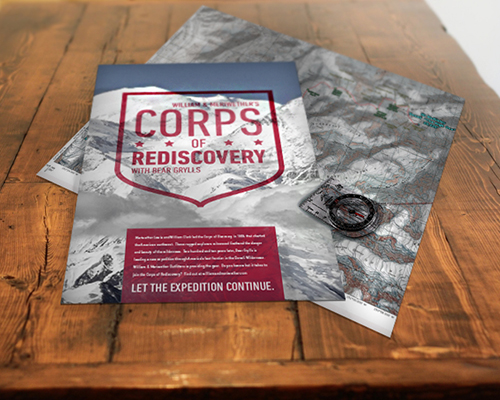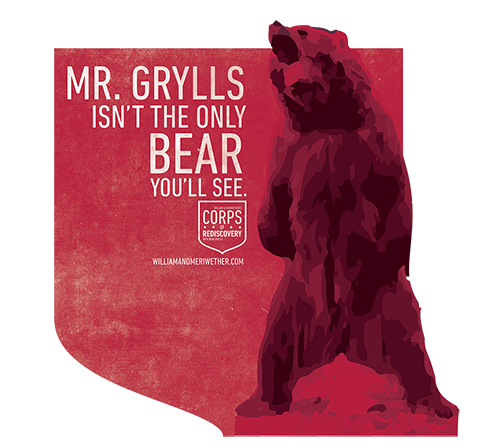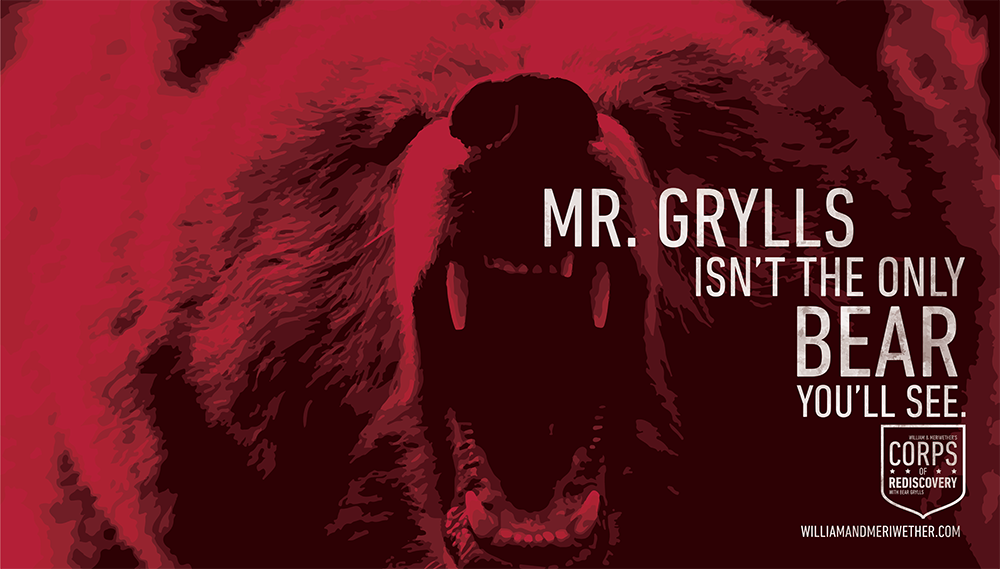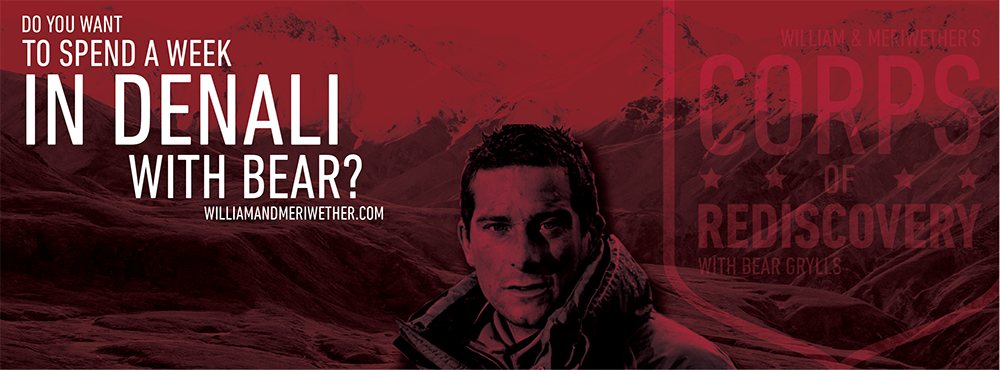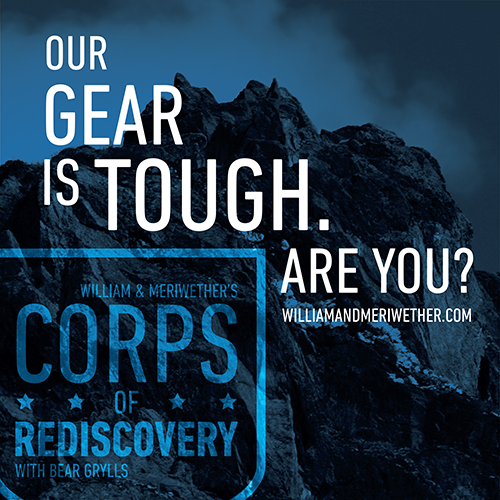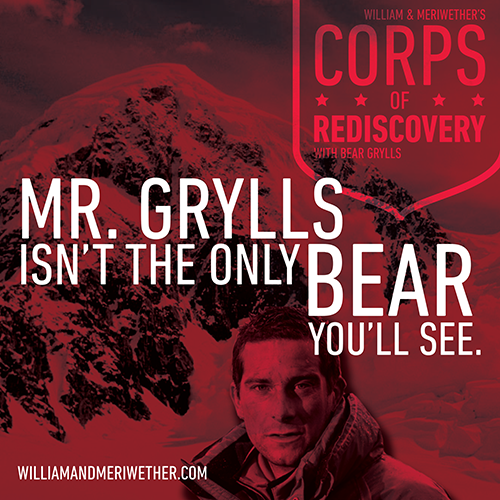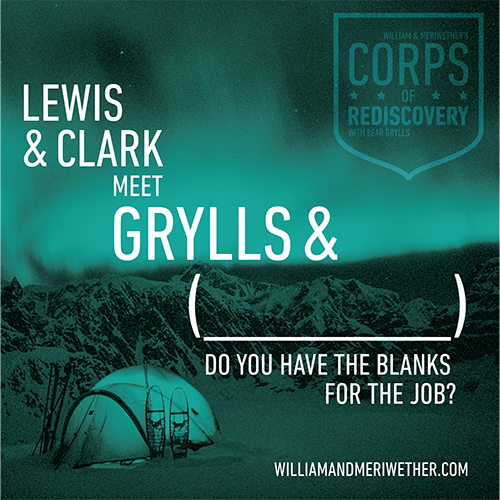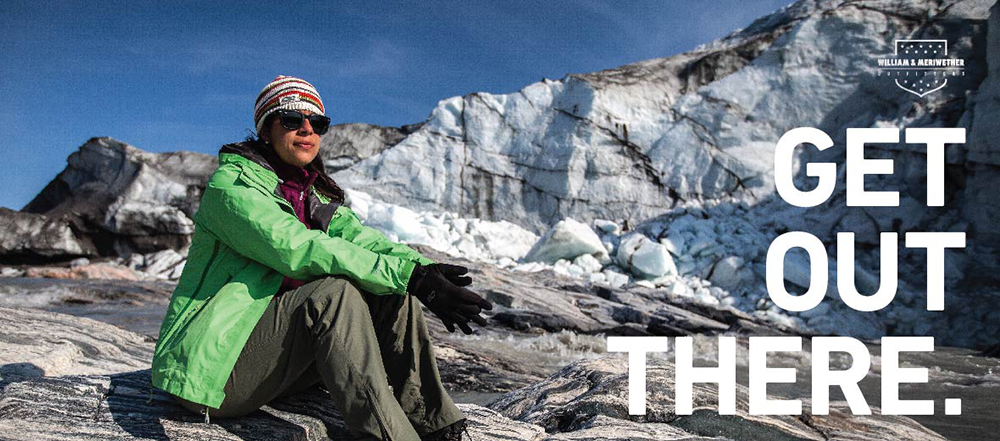
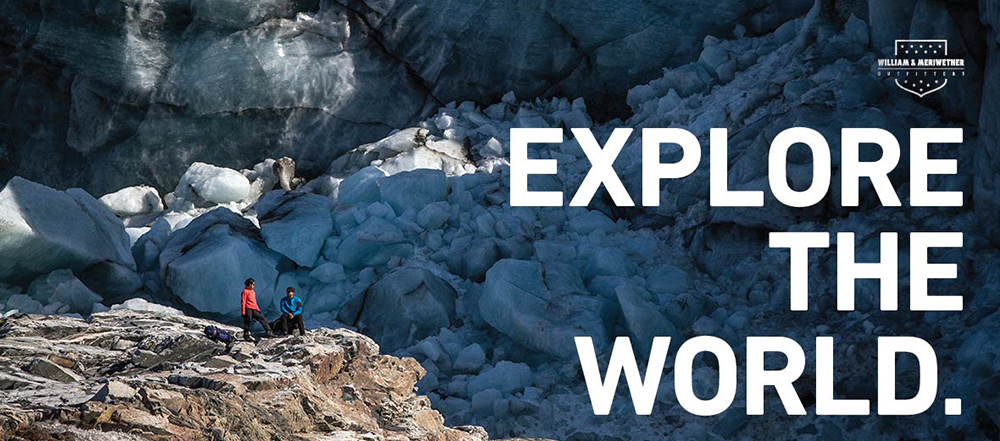
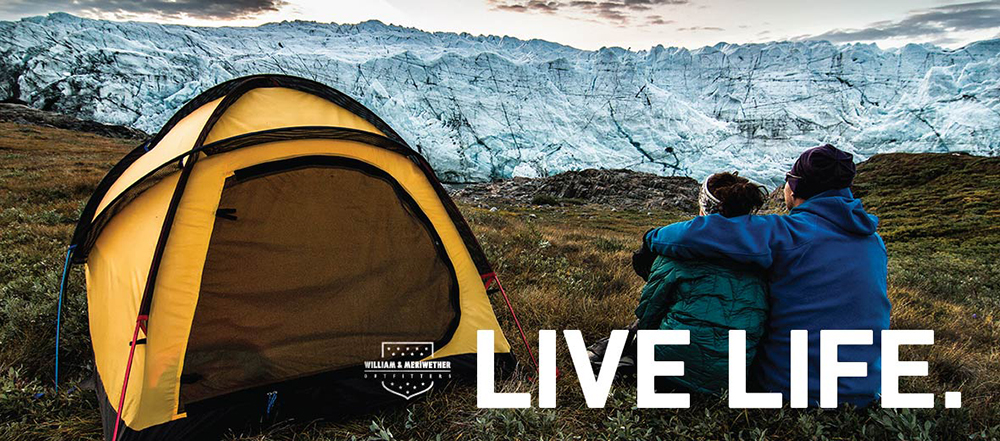
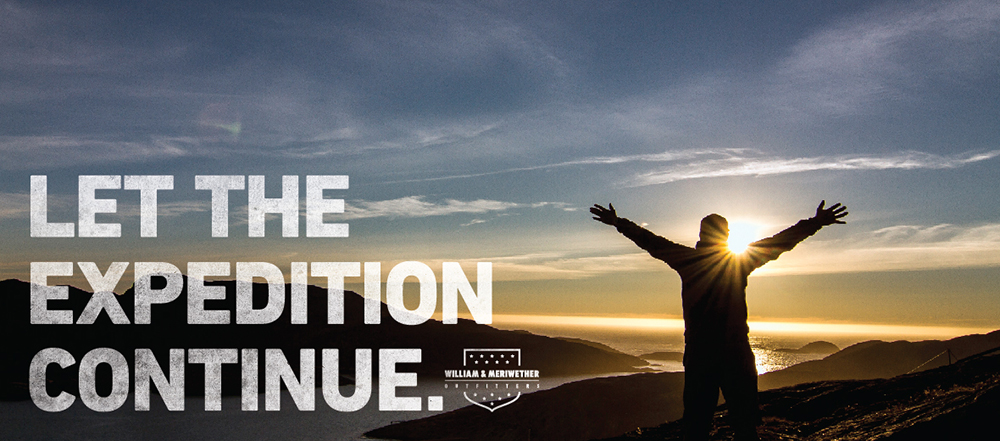
William & Meriwether Outfitters
The Branding
William & Meriwether is all about rugged Americana. Starting with the name, William & Meriwether reminds consumers of the explorers of our American frontier, Meriwether Lewis and William Clark. The name sounds high-end without being elitist. It has a built in history, lending the brand an already established credibility. The name is also inclusive to the female consumer.


The shield continues to strengthen the American narrative and features the 15 stars on the flag at the time of the Lewis & Clark expedition. The brand features outdoor photography with reds, whites, and blues emphasized. It is a gritty, rugged brand, accentuating the idea of the American outdoorsman. William & Meriwether products will be 100% American Made. Its products will be guaranteed. Customer service and loyalty to the consumer will be emphasized throughout the shopping experience.
In implementing the William & Meriwether brand, I have explored print, outdoor, packaging and labeling, and website design to flesh out a complete experience for the consumer. Providing a consistent style and feel enables the customer to quickly identify William & Meriwether in the marketplace, allowing the full potential of the brand equity to be utilized by the company.
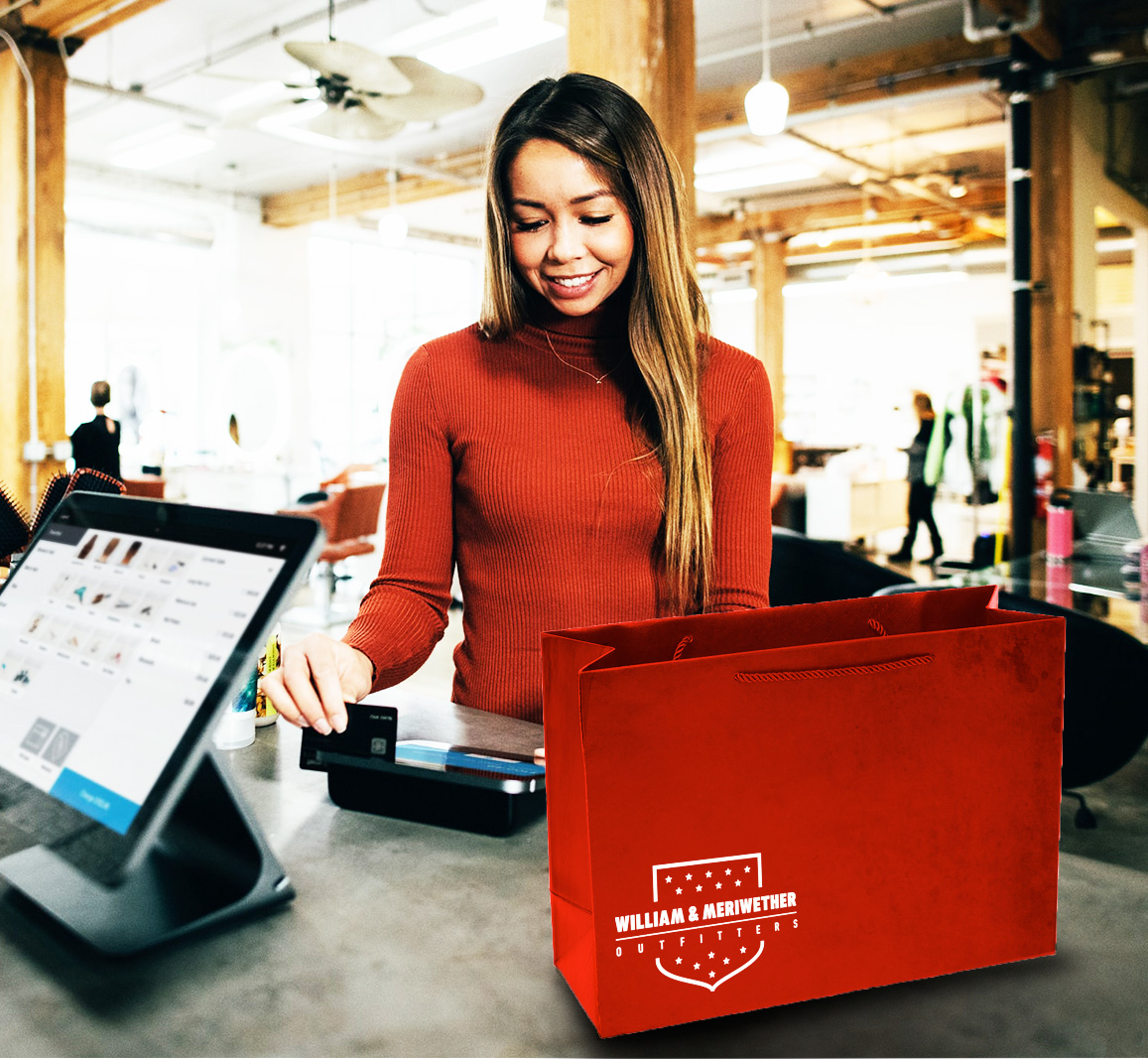
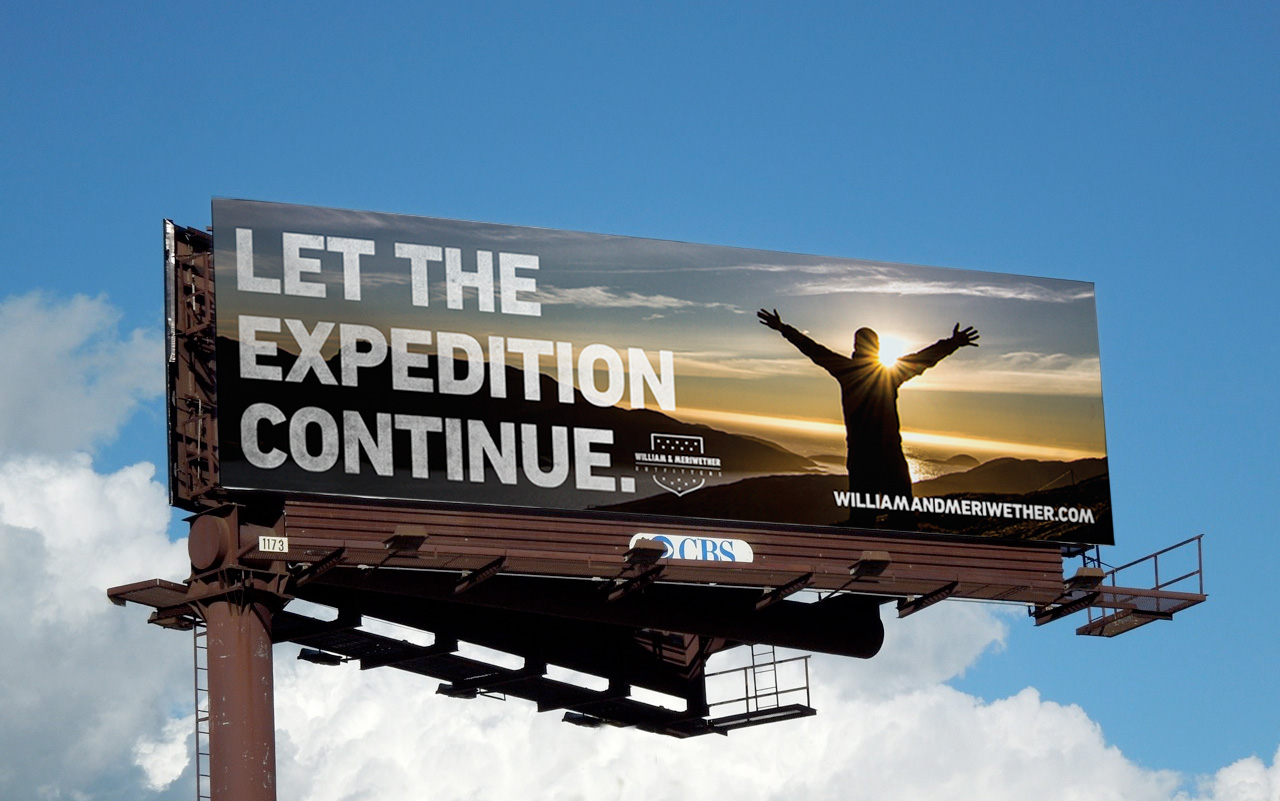
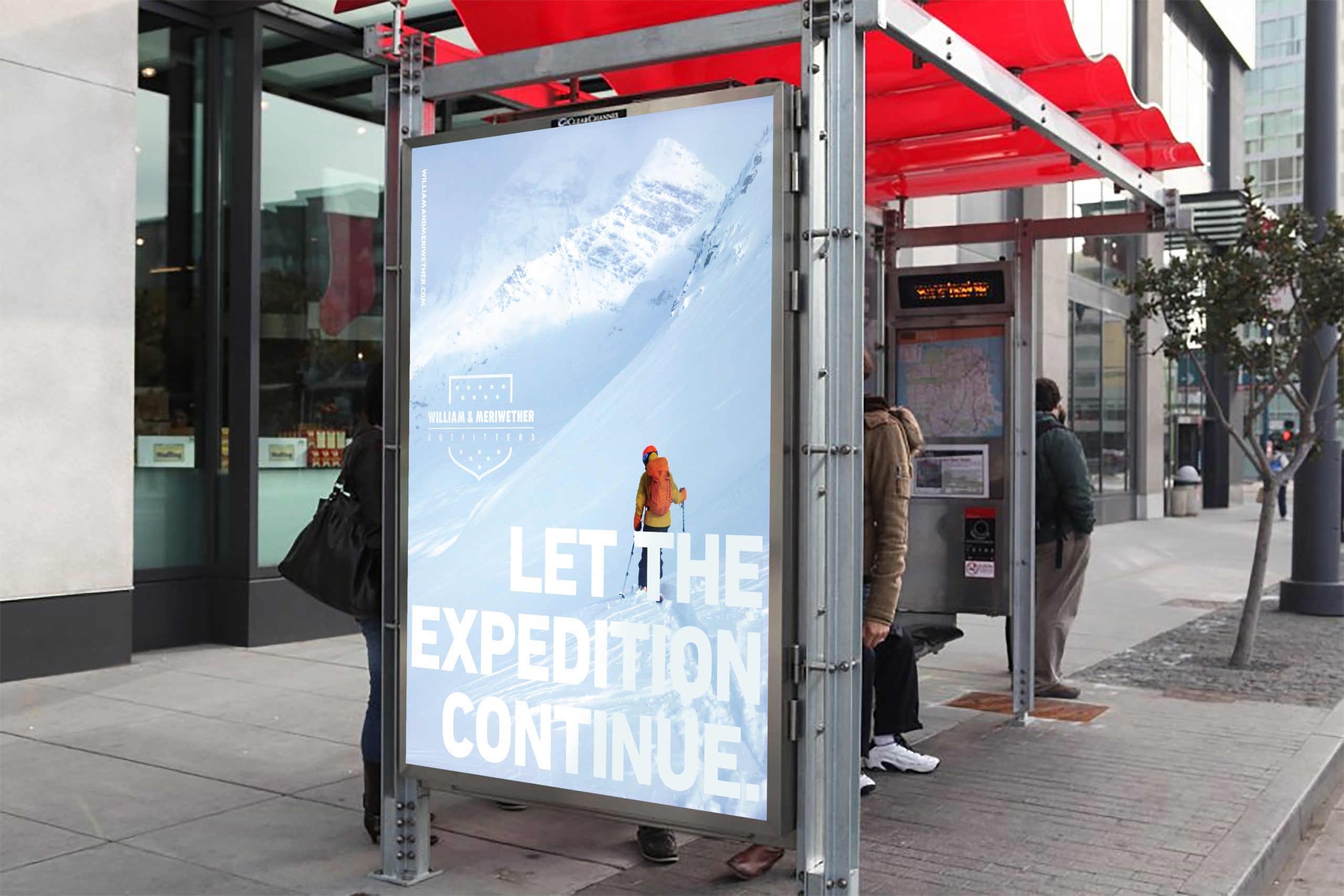
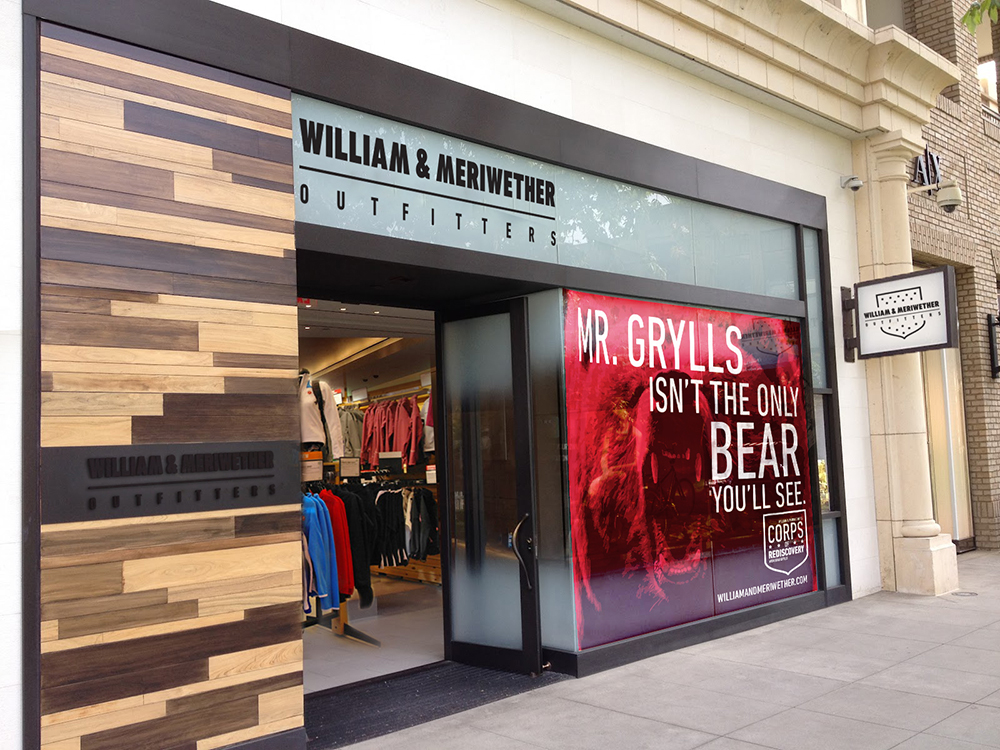
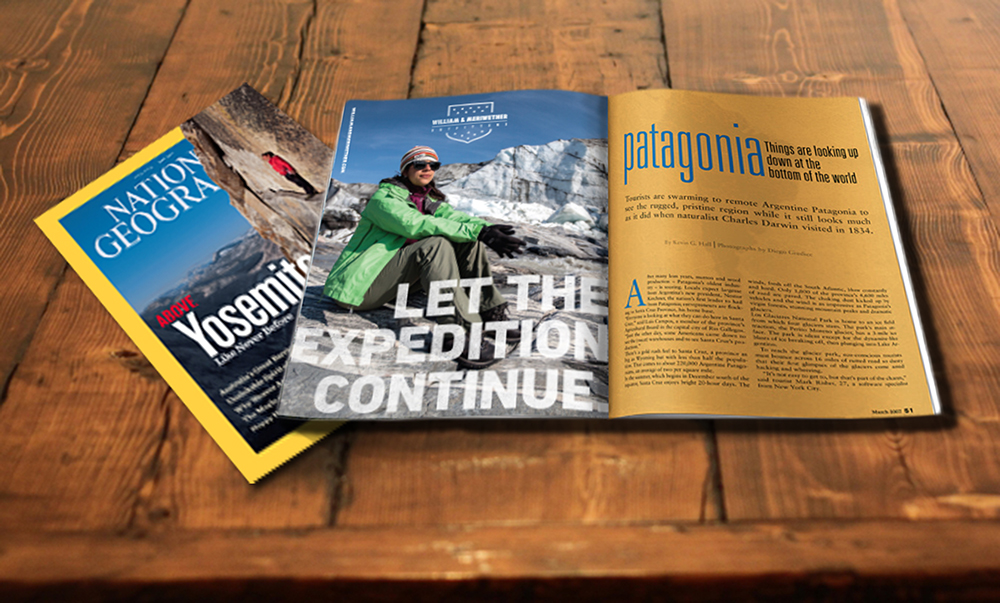
The Microcampaign
Accompanying the main brand, I have developed a microcampaign called The Corps of Rediscovery. Taking its name from the Corps of Discovery led by Lewis and Clark, it also references the sense of rediscovery found in the target consumer as he attempts to reconnect with his youthful, adventurous spirit. This campaign is a contest that consumers enter for the chance to win a week long expedition into the Denali Wilderness with celebrity outdoor survivalist, Bear Grylls.
This microcampaign utilizes some of the same brand elements of William & Meriwether while introducing new elements to distinguish it from standard brand materials. Color overlays are introduced over the imagery, creating depth and interest in the promotional materials with bright pops of color over the familiar outdoor textures of the brand. Typography is utilized in more dynamic ways, creating bold statements to entice the audience. By introducing these new elements within the language of the existing brand, the microcampaign differentiates itself as something more than William & Meriwether, not something different than William & Meriwether.
The microcampaign utilizes print and outdoor materials as well as social media to drive the message of the contest. In addition to these straightforward elements, the campaign also features a guerrilla marketing component. Large signs featuring grizzly bears and copy will be positioned in city scapes and parks. These signs will pop out in front of passersby upon triggering a sensor. Along with the sign will be an audio recording of a bear growling. These unexpected signs will quickly draw a buzz as people pass by and encounter them.

Creating the Company
When given the challenge of creating a brand from scratch, I was excited. Having already earned a bachelor of business administration degree in entrepreneurship from the University of Oklahoma, I was familiar with the process of beginning a business. I wanted to develop a premium outdoor brand that represented the idea of rugged Americana.
There are several important factors to consider when developing an outdoor apparel company. According to the outdoor industry association in their 2012 report on the outdoor industry, each year Americans spend $646 billion dollars on outdoor recreation. Of that, $120.7 billion is spent on apparel, footwear, equipment, vehicles, accessories, and services. Furthermore, between 2005 and 2011, there has been a 5% annual growth in the outdoor recreation economy. This growth occurred even in the midst of an economic recession when many sectors contracted. Some major competitors in the outdoor apparel industry are names like Patagonia, Columbia, Marmot, the North Face, and Arc’Teryx. These companies are multinational organizations competing across the globe.
There are two primary markets for outdoor goods, Europe and the United States. The European market has been the primary focus of these companies as of late since it valued at around 12 billion euros compared to the 6.5 billion dollar American market. However, according to a recent Reuters article, this market has become saturated. That leaves America as the primary area for growth in the outdoor market. A company focused on American growth could penetrate this market and see room for growth.
Based on a target audience analysis of outdoor technical clothing by Marco Gervasio, the target market for high-end outdoor products is a 60/40 split between men and women. These consumers are between 30 and 45 years of age. They make over $100,000. They are outdoor enthusiasts with an appreciation for high quality and high performance. These consumers are brand loyal, but willing to try new brands based upon quality. They like to take risks and have a strong sense of adventure. These consumers look to educate themselves on the best products and ask friends and experts for product recommendations. They look for advertisements, endorsements, and customer stories in finding new products. These consumers like to be kept up to date with email newsletters and look for a complete customer experience. They like to know that a brand will back up its products.
In a recent Harris poll, consumers were asked to rate the importance of buying American in a variety of products. In regard to clothing, 72% of Americans found buying American to be either important or very important, with 76% of Gen-Xers, those 36-47, saying that buying American was important or very important. This is a clear indication that consumers are looking for a high quality, American made outdoor apparel product. Currently, none of the major competitors is positioned in such a way.

